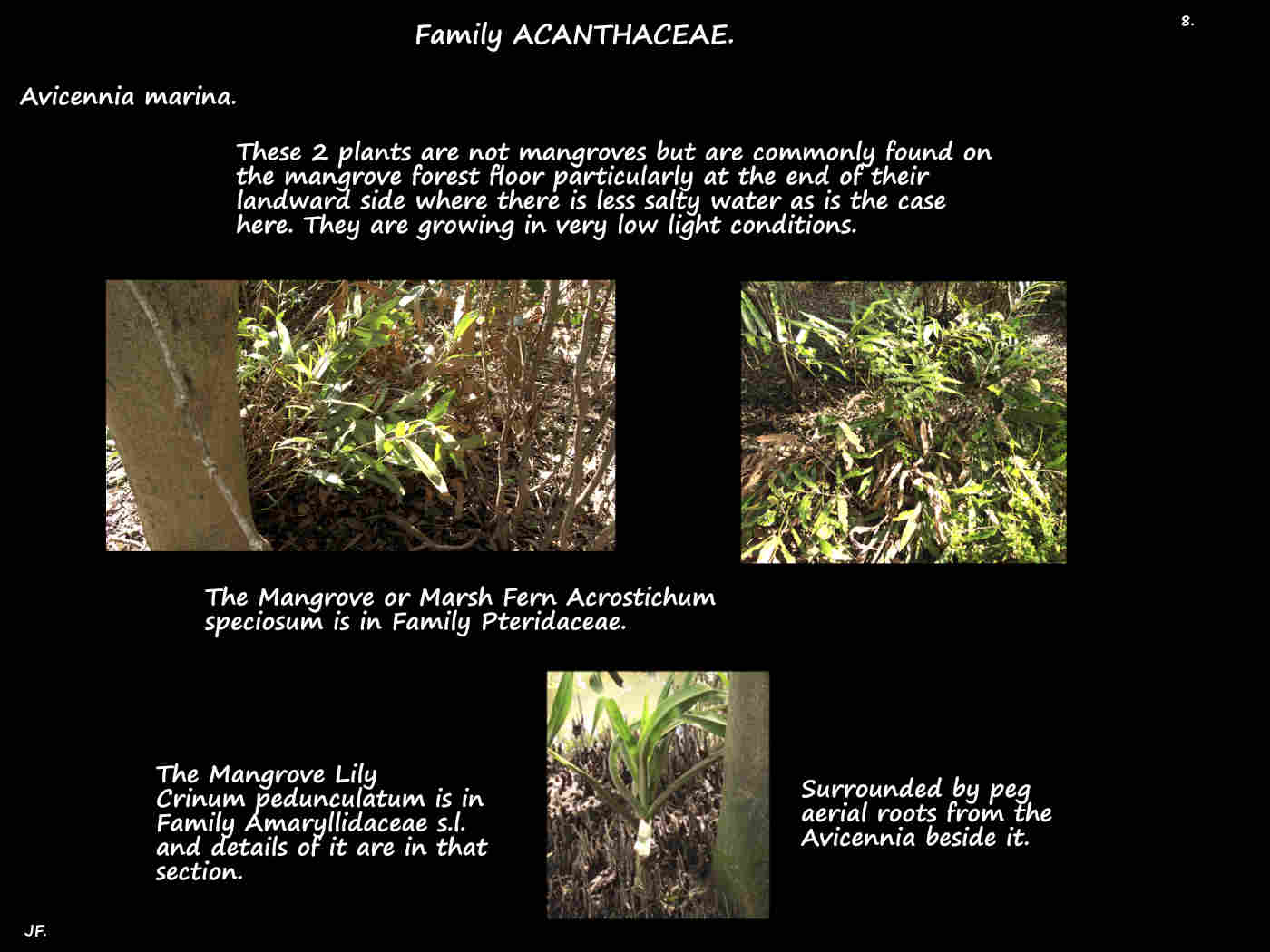Avicennia.
‘Mangrove’ is used to refer to a particular type of habitat which is the inter-tidal region between
saltwater on the coast to fresh or brackish water up rivers and creeks.
It is also used for the 69 species of plants, in 20 families that grow in those conditions.
Queensland has around half of these species.
(See also Aegiceras corniculatum under Primulaceae.) Avicennia has been in the Verbenaceae family and their own family Avicenniaceae. The Avicennia genus has 8 to 10 (16) species depending on how they are classified. The trees or shrubs are commonly known as Mangroves and they grow in the inter-tidal area along the They are characterised by having pneumatophores (peg or pencil roots) which are vertical aerial roots The simple leaves, on a petiole are opposite and decussate (in 4 ranks). Terminal or axillary inflorescences are a cluster of flowers that have no stalk (pedicel). The 4 stamens insert onto the top of the corolla tube between the petal lobes. The fruit are a laterally compressed capsule that usually only has 1 seed. J.F.
The latest APG (Angiosperm Phylogeny Group) classification has them reduced to the Subfamily Avicennioideae
in a loosely defined Acanthaceae family.
A. marina is a variable species with a number of subspecies and a variety.
coast, estuaries, rivers and creeks.
They are able to live in very salty water with the excess salt excreted through their leaves.
that absorb oxygen from the air at low tide.
The elliptic to lance-shaped blades are leathery and have a smooth edge.
At the base is an involucre with 1 bract and 2 bracteoles that are scale-like.
The 5 overlapping ovate sepals in the calyx are all similar.
The yellow or orange bell-shaped corolla has a basal tube with 4 ovate lobes.
They may all be similar or in 2 pairs of slightly different lengths.
The superior ovary has 4 ovules and a style with 2 short stigma lobes.
Nectar is produced around the base of the ovary.
The seed germinates on the tree so when the capsule eventually falls it contains 2 large folded
green seed leaves or cotyledons on a short stem sometimes with small roots.
If they fall into the water the seeds can float.


